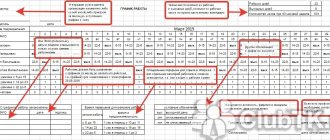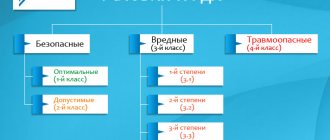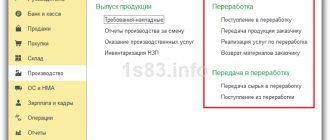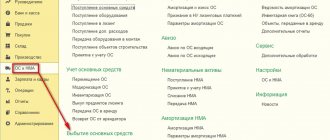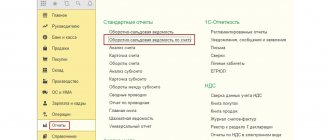Accounting for materials in a manufacturing enterprise is a significant part of the overall accounting process and consists of many components. Companies strictly limit their inventories, making sure that their value does not exceed established calculated limits, and that materials are used effectively and efficiently in production, without lying in warehouses and thereby diverting funds from circulation.
However, situations when a segment of illiquid assets is formed in the structure of inventories often occur. Then the company's management is faced with the question of selling unused materials, since unnecessary in one organization, they may be needed in another. Let's consider what accounting records are used to record the sale of materials in manufacturing companies.
We prepare documents
The primary documents confirming the receipt of materials received during the liquidation of fixed assets to the warehouse are:
- Act on the recording of material assets received during the dismantling and dismantling of buildings and structures (form No. M-35);
- Invoice for internal movement of materials (form No. M-12);
- Receipt order (form M-4).
The actual cost of materials received as a result of the liquidation of fixed assets or other property is determined based on their current market value as of the date of acceptance for accounting (clause 79 of the Guidelines for the accounting of fixed assets, clause 66 of the Guidelines for the accounting of inventories). At the time of acceptance for accounting of materials received as a result of the liquidation of fixed assets, this amount is included in other income (clause 31 of PBU 6/01).
Scrap for sale
Materials generated as a result of dismantling (disassembling for spare parts) unnecessary fixed assets may be useful to third-party companies. This means that they can act as goods for resale. In this case, the price is determined by agreement of the parties to the transaction. Materials are sold at market prices based on their physical condition. The accounting entries indicate the contractual cost of materials including VAT. The sales debit records the actual value of inventories and the amount of accrued VAT. Payment received from customers is reflected in the debit of cash accounting in correspondence with the credit of settlements.
For example, an organization dismantled a fixed asset item.
The market value of materials obtained as a result of dismantling at the time of their receipt was 100,000 rubles. The materials were sold, their contractual cost was 105,000 rubles. excluding value added tax. The accountant needs to make the following entries: Debit 62 Credit 91.1 – 123,900 rubles. – the buyer’s debt for materials sold is reflected; Debit 91.2 Credit 68 – 18,900 rub. – VAT is charged on the sale price of materials; Debit 91.2 Credit 68 – 100,000 rub. – the cost of materials sold is written off; Debit 50, 51, 52 Credit 62 – 123,900 rub.
– payment has been received from buyers. When selling materials received from the liquidation of fixed assets, the organization has the right to reduce profit by expenses, defined as the amount of non-operating income when they are accepted for accounting. This procedure is stipulated in subparagraph 2 of paragraph 1 of Article 268 of the Tax Code.
What to do if the FKKO does not have the type of waste you need:
In this case, the waste generator is required to confirm the hazard class of the waste. To do this, you need to contact an accredited laboratory to obtain an analysis of the component composition of the waste. Based on the conclusion about the component composition, the hazard class is calculated.
When the hazard class of waste is received, a hazardous waste passport is issued for the waste, in which the waste group code is indicated as the waste code. The issued passport is certified by the head of the institution (enterprise) and, together with a package of documents, is transferred to Rosprirodnadzor.
The package of documents is regulated by Order of the Ministry of Natural Resources and Ecology of the Russian Federation dated December 5, 2014 No. 541 “On approval of the Procedure for classifying waste of I-IV hazard classes to a specific hazard class.”
Rosprirodnadzor sends a proposal to introduce a new FKKO code to the Federal State Budgetary Institution “Federal Center for Analysis and Assessment of Technogenic Impact” (FSBI “FCAO”). FSBI "FCAO" together with FSBI Ural Research Institute "Ecology" analyzes the received materials (documents) and makes a decision to enter a new code into the FKKO and notifies Rosprirodnadzor about this. And Rosprirodnadzor notifies the applicant that the applicant has been assigned the FKKO code.
After entering the code into the FKKO, you need to correct the previously developed waste passport, in accordance with the information received from Rosprirodnadzor, and again notify Rosprirodnadzor about the development of a new passport.
Reuse
As the proverb says: “Everything is useful on the farm.” Indeed, materials from dismantling old property can form the cost of new property, in other words, they are used in production.
When materials are released from warehouses to production, they are written off from material assets and credited to the appropriate cost accounts, and for management needs they are taken into account in expenses. In this case, the price of materials at which they were accepted into the warehouse is reflected in the cost of the finished product received, or increases the amount of fixed assets produced with their participation.
For example, when liquidating an obsolete operating system, materials with a total market value of 10,000 rubles were taken into account. The indicated reserves were used in full:
- When repairing another fixed asset by a repair team;
- When reconstructing (creating) another fixed asset;
- In the production of finished products;
- For general business needs.
In the accounting department of the organization, in each case, various entries will be made on the accounting accounts:
Debit 23 Credit 10 - material expenses for repairs are reflected; Debit 08 Credit 10 – materials for the reconstruction of the operating system were written off; Debit 20 Credit 10 – materials used for production; Debit 26 Credit 10 – materials are included in general business expenses.
In tax accounting, property obtained as a result of dismantling or disassembling fixed assets decommissioned is recognized as inventory. Such goods are included in material costs. In this case, the amount of costs is equal to the amount previously included in non-operating income (clause 2 of Article 254 of the Tax Code).
How to sell illiquid assets?
Before selling products, the following steps must be completed:
- Inventory of all products that are considered non-liquid. You can select individual product categories.
- An approximate determination of the value at which a product can be sold. At this stage, products are identified that are worth repairing for sale. A list of goods that do not make sense to be repaired is generated.
- Determining the amount of markdown for illiquid assets. When setting a discount, the goal is to sell the product at the highest possible price.
Where to put illiquid assets with maximum benefit for the enterprise? The following options exist:
- Correct presentation of products . Competent product presentation is a guarantee of sales success. It makes sense to start designing the checkout area. The illiquid stock can be placed in the most visible place and an attractive price tag can be set.
- Return of products to the supplier . This is the most profitable option. In essence, the company loses nothing. There is no need to spend money even to attract buyers. However, the possibility of returning products should be discussed with the supplier in advance.
- Sale of illiquid assets to other companies . Products can be sold either to your partners or to your competitors. You can also send the goods to another branch of the company. There is a possibility that in another place the products will cease to be illiquid.
- Carrying out sales . Discounts and promotions are the most common way to sell illiquid assets. It makes sense to allocate a separate area for the product.
- Formation of gift sets . This is another option that has proven to be successful. It is especially relevant on the eve of the holidays.
- Combining liquid and non-liquid goods . For example, a company cannot sell ice cream as well as syrup. In this case, you can try selling ice cream by weight, adding syrup to it.
- Sale of illiquid goods during certain seasons . For example, the sale of snow shovels should be timed to coincide with the end of autumn.
- Organization of an advertising campaign . You can hang up posters with an appeal to purchase goods at a discount, and distribute flyers. However, it must be taken into account that organizing the campaign will require funds. If expected income is less than expenses, this option is not suitable.
The constant appearance of illiquid assets in large quantities is a consequence of a serious system error. In this case, it is necessary to conduct a full analysis of the company’s activities and identify shortcomings.
Write-off of inventories
Materials that have become unusable or obsolete can be written off from the warehouse. A deduction is also made when shortages or loss of assets are identified due to fires and natural disasters.
Unfortunately, the Ministry of Finance of the Russian Federation in this case suggests that the taxpayer, when registering materials, reflect their market value as part of non-operating income, as required by paragraph 13 of Article 250 of the Tax Code (letter dated April 19, 08 No. 03-03-06/2/58). At the same time, financial department specialists believe that it does not matter at all whether the specified property will participate in production or commercial activities, or is subject to disposal.
If the law is read literally, this conclusion can be considered correct, however, if the company manages to prove the zero value of the written-off materials, additional tax payments can be avoided.
What mistakes do waste managers make today and how to avoid them:
From 2013 to July 1, 2021, collection, transportation, processing and disposal activities were not subject to licensing. During this period, a practice developed when service and repair companies and enterprises involved in the procurement of scrap metals took on the work of recycling. However, at the moment, the involvement of such organizations entails a violation of the law. As mentioned above, written-off property is waste, and only licensees can perform any actions with waste.
The removal of circuit boards containing precious metals from decommissioned computer and office equipment is a waste treatment activity and cannot be carried out by enterprises that do not have a waste management license. The Assay Office certificate is currently not sufficient to carry out this work. After withdrawal, boards containing precious metals are subject to transfer only to refineries, the official list of which is established by the legislation of the Russian Federation.
Equipment containing ferrous or non-ferrous metal, after decommissioning, becomes waste and cannot be collected and transported by enterprises licensed to process (harvest) metal, but must be transferred as waste in accordance with the procedure established by law for processing and disposal. And only after recycling, secondary resources, including scrap metals, are transferred to enterprises licensed to procure scrap metals.
For organizations engaged in waste disposal activities, special conditions for updating licenses are provided. Such enterprises must re-register them before January 1, 2021. Some of these licenses indicate codes for waste groups that include waste generated when property is written off. In this regard, a false understanding may arise that, for example, decommissioned equipment can be placed at a landfill. However, it is not. Disposal of waste at a landfill is possible only if this waste cannot be disposed of. And waste must be processed and disposed of only in that part that cannot be disposed of after processing.
Interpretations of the Ministry of Finance
It’s funny, but the Ministry of Finance proposes to take into account as part of non-operating income the cost of materials received or other property from the liquidation of property that is not a fixed asset. At the same time, organizations are not allowed to reduce taxable profit by the amount of materials used in production, sold externally or written off for scrap, since the taxpayer has no expenses for acquiring property (Letter dated October 21, 2009 No. 03-03-05/188).
So, if an organization liquidates an unfinished construction project, the company must take into account the cost of the materials received as part of non-operating income, since their list, according to Article 250 of the Tax Code, is not closed. At the same time, the taxpayer is obliged to follow the “letter of the law”, and with further use in the production or sale of such goods will not be able to take advantage of the provisions of paragraph 2 of Article 254 of the Tax Code, since it deals with the cost of inventories received as a result of the liquidation or repair of fixed assets (letter Ministry of Finance of the Russian Federation No. 03-03-06/1/234 dated April 6, 2010).
Obviously, it is beneficial for the taxpayer to use secondary raw materials in their own production or sell them, giving “new life” to units of liquidated fixed assets. And it is unprofitable to accept materials for accounting if the property being dismantled is not a fixed asset or the resulting recyclable materials are not planned to be used for commercial purposes.
Irina Sidorova, financial consultant

